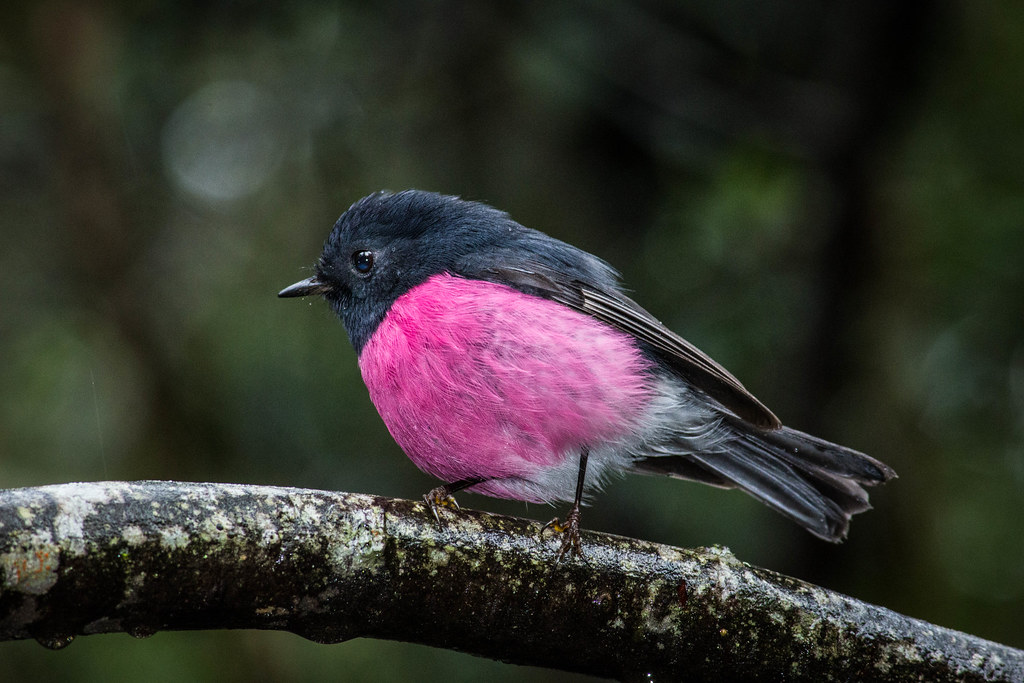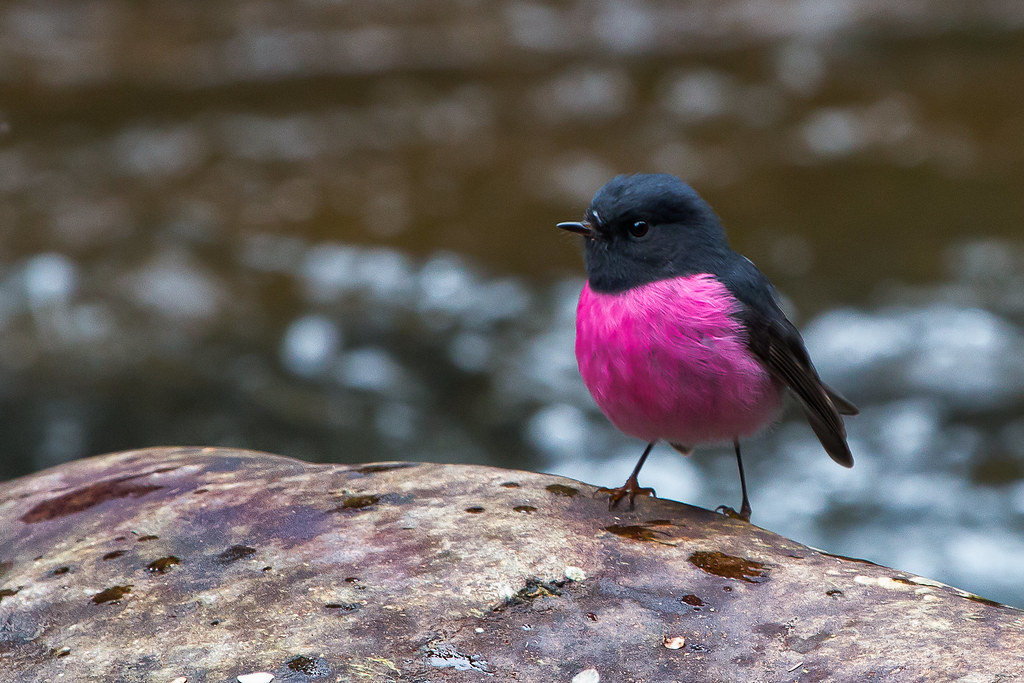The Pink Robin: The Gloriously Pink-breasted Bird
Sunday, 18 August 2019
The robin, both European and American is famous for its red breast. The subject of nursery rhymes and Christmas cards the male of the species is resplendent in red. Australia, too, has a robin. One might, of course, expect this particular country to produce something a little different: it has form, after all. So, step forward the pink robin, Australia’s passerine of pulchritudinous pinkness.
Just in case you think this is some kind of practical joke, here's a rare and short video of the pink robin.
Image Credit
Alliteration aside, the pink robin (Petroica rodinogaster) was named with just a little pre-Victorian chauvinism. It was first so described by a Belgian naturalist Auguste Drapiez in 1819. Yet its nomenclature only describes half the species as the pink robin is sexually dimorphic. While the male does have a pink breast, the female of the species has a rather drab grey-brown plumage. Drapiez decided to call it a robin too, despite the unlikelihood of it being related to the European variety. You can see why.
Image Credit
However don’t be too dismayed for the female or indeed her exclusion from the name of the species. She will breed and produce chicks whatever color her feathers. It is the male that has the difficult job – to be chosen to mate. His pink breast and white crown will hopefully secure him a partner but there will always be competition from another male perhaps a little pinker and perkier than he.
Image Credit
His natural disposition may not help. Unlike the European robin, known for its gregariousness (at least in English gardens; it is rather more wary on continental Europe where it was once hunted) the pink robin is something of a shy bird. It is notoriously difficult to photograph as it tries to keep itself as hidden as possible while it darts about for food.
Image Credit
Pink robins can be found on the island of Tasmania, King and Flinders Islands and the wetter parts of Victoria and south eastern New South Wales. This gives the species a massive range of over 20,000 km2. Its favored habitat is a temperate forests or a subtropical or tropical moist lowland forest. The one pre-requisite seems to be that its nesting place must be damp.

Moss thrives in damp places and the pink robin needs it for its nest which it will make in a deep cup shape. It will add feathers and, cleverly, spider webs are used as a binding material. Inside, fine grass and fern serve as a lining on to which a clutch of three or four eggs is laid. The nest can usually be spotted in the fork of a tree and from this vantage point the robins swoop down and catch insects on the ground or in low bushes.

Yet for all the similarity to its more famous namesake, this particular branch of the passeriformes tree diverged so long ago that they could never claim to be cousins. However, there must surely be a place for this gloriously pink-breasted robin on someone’s Christmas card?
Image Credit
Just in case you think this is some kind of practical joke, here's a rare and short video of the pink robin.
Image Credit
Alliteration aside, the pink robin (Petroica rodinogaster) was named with just a little pre-Victorian chauvinism. It was first so described by a Belgian naturalist Auguste Drapiez in 1819. Yet its nomenclature only describes half the species as the pink robin is sexually dimorphic. While the male does have a pink breast, the female of the species has a rather drab grey-brown plumage. Drapiez decided to call it a robin too, despite the unlikelihood of it being related to the European variety. You can see why.
Image Credit
However don’t be too dismayed for the female or indeed her exclusion from the name of the species. She will breed and produce chicks whatever color her feathers. It is the male that has the difficult job – to be chosen to mate. His pink breast and white crown will hopefully secure him a partner but there will always be competition from another male perhaps a little pinker and perkier than he.
Image Credit
His natural disposition may not help. Unlike the European robin, known for its gregariousness (at least in English gardens; it is rather more wary on continental Europe where it was once hunted) the pink robin is something of a shy bird. It is notoriously difficult to photograph as it tries to keep itself as hidden as possible while it darts about for food.
Image Credit
Pink robins can be found on the island of Tasmania, King and Flinders Islands and the wetter parts of Victoria and south eastern New South Wales. This gives the species a massive range of over 20,000 km2. Its favored habitat is a temperate forests or a subtropical or tropical moist lowland forest. The one pre-requisite seems to be that its nesting place must be damp.

Moss thrives in damp places and the pink robin needs it for its nest which it will make in a deep cup shape. It will add feathers and, cleverly, spider webs are used as a binding material. Inside, fine grass and fern serve as a lining on to which a clutch of three or four eggs is laid. The nest can usually be spotted in the fork of a tree and from this vantage point the robins swoop down and catch insects on the ground or in low bushes.

Yet for all the similarity to its more famous namesake, this particular branch of the passeriformes tree diverged so long ago that they could never claim to be cousins. However, there must surely be a place for this gloriously pink-breasted robin on someone’s Christmas card?
Image Credit
Give a Gift
If you enjoyed this article, please consider making a gift to help Ark In Space to continue to bring you fascinating features, photographs and videos.
Thank you!







